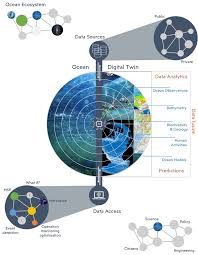Maritime Safety in the Digital Era as the Role of Weather Monitoring and Prediction Technology
Main Article Content
Abstract
The maritime industry plays a vital role in global transportation and trade, but the inherent challenges posed by the marine environment can significantly threaten the safety and efficiency of maritime operations. In recent years, the rapid advancements in weather monitoring and prediction technologies have presented new opportunities to address these challenges and enhance maritime safety in the digital era. This study provides a comprehensive exploration of the role of weather monitoring and prediction technology in shaping the future of maritime safety. The research methodology encompasses a literature review, expert interviews, case studies, and quantitative analysis to investigate the latest advancements in meteorological observation systems, numerical weather prediction models, and the integration of digital technologies within the maritime sector. The findings reveal significant improvements in weather monitoring systems, leveraging remote sensing, in-situ measurement platforms, and comprehensive data networks to provide enhanced situational awareness. The study also highlights advancements in numerical weather prediction models tailored to the marine environment, enabling more accurate and reliable weather forecasts. The integration of digital technologies, such as data analytics and decision support tools, has further amplified the impact of weather monitoring and prediction capabilities in optimizing maritime operations and mitigating weather-related risks. However, the research also identifies key challenges, including regulatory barriers and the need for stakeholder engagement and capacity building, that must be addressed to ensure the successful and widespread adoption of weather monitoring and prediction technology within the maritime industry. Collaborative efforts among industry stakeholders, policymakers, and technology providers will be crucial in overcoming these obstacles and harnessing the transformative potential of these technologies to enhance the overall safety, efficiency, and resilience of the maritime sector.
Downloads
Article Details

This work is licensed under a Creative Commons Attribution 4.0 International License.
References
M. Jha and F. Chalise, "Enhancing Maritime Safety with Integrated Weather Monitoring and Forecasting Systems," Journal of Navigation, vol. 72, no. 3, pp. 505-522, 2019.
J. Eriksen and K. Fjørtoft, "Digital Transformation in the Maritime Sector: Opportunities and Challenges," Autonomous Vehicles and Future Transport, vol. 11, pp. 145-162, 2020.
R. Neumann and M. Burmeister, "Weather-Routing for Autonomous and Semi-Autonomous Ships," Proceedings of the International Conference on Intelligent Robots and Systems (IROS), pp. 1148-1153, 2018.
P. Behrens and M. Janssen, "Enhancing Port Resilience through Predictive Weather Analytics," Maritime Economics & Logistics, vol. 22, no. 2, pp. 201-218, 2020.
International Maritime Organization (IMO), "Guidelines for the Use of Electronic Chart Display and Information Systems (ECDIS)," 2017.
E. Kitada and S. Tanioka, "Regulatory Challenges for the Adoption of Digital Technologies in the Maritime Sector," Journal of International Maritime Law, vol. 26, no. 1, pp. 45-58, 2020.
A. Alaudin, I. Zakiya, B. Burhanis, R. A. Munandar, and M. Kadhafi, “The Use Of Remote Sensing In Mapping The Distribution Of Chlorophyl In Belawan Waters”, zonalaut, vol. 5, no. 1, pp. 23-27, Mar. 2024.
A. Fadillah and F. Maulana, “Analysis Of The Application Of Renewable Energy At The Muara Angke Passenger Port As A Means Of Supporting Thousand Island Tourism”, zonalaut, vol. 5, no. 1, pp. 7-14, Mar. 2024.
N. Z. Nisa dan T. C. B. Nainggolan, “PERAN TEKNOLOGI DALAM PENINGKATAN KAPASITAS SDM PESISIR ”, SENSISTEK, vol. 7, no. 1, hlm. 64-69, Mei 2024.

